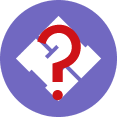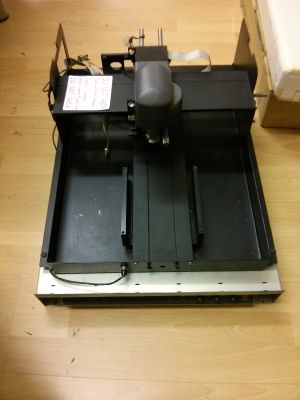Difference between revisions of "Equipment/Dahlgren Wizzard 2000 ST"
| Line 18: | Line 18: | ||
}} | }} | ||
| − | This is a project to convert a CNC engraver to also allow it to operate as a CNC pcb drill. The Engraver is a Dahlgren Wizzard 2000 ST. | + | This is a project to convert a CNC engraver to also allow it to operate as a CNC pcb drill. The Engraver is a Dahlgren Wizzard 2000 ST. Currently, the engraver is actively worked on by [[User:Martin_p|Martin_p]], and for the time being lives on the floor in the arts/crafts corner. The original roadmap/discussion has been moved to [[Talk:Equipment/Dahlgren_Wizzard_2000_ST|discussion]] for this page. |
| + | |||
| + | This wiki page is not written in a chronological order, and relevant sections will be updated as the work progresses. Please feel free to contact me with any suggestions, or correct any errors or omissions. | ||
| + | |||
| + | |||
| + | == Resources == | ||
| + | All resources, PCB designs and arduino C++ files live on [https://github.com/martin-pr/cnc-router-hack GitHub]. Feel free to look around and/or contribute (but please email me first). | ||
| + | |||
| + | == Mechanics == | ||
| + | |||
| + | [[File:CNC_full_view.jpg|thumb|left|Original state (without cover) - full view]] | ||
| + | |||
| + | === Original state === | ||
| + | Apart from lots of dirt and a bit of rust, the mechanical parts were in a reasonable order. The most important missing bits were: | ||
| + | * 3x NEMA 23 motors | ||
| + | * 2x 6mm flexible coupling | ||
| + | * z-axis pulley (6mm shaft) | ||
| + | * working bed | ||
| + | * main motor and belt between the rotary tool bit and the motor | ||
| + | * bit mounting mechanism (only a torso of it left) | ||
| + | |||
| + | |||
| + | <br clear=all> | ||
| + | == Electronics == | ||
| + | |||
| + | === Original state === | ||
| + | Electronics was split into 3 boards - driver/power source, a 386 controlling board and a front display/buttons board. | ||
| + | |||
| + | ===== Driver board ===== | ||
| + | The driver board was in a good shape, and seemed to be relatively easy to hack. The power source is 35V (motors) and 5V (electronics, stabilised), and works beautifully. The middle part contains a 6-phase motor driver, and will probably not end up used in the end. The stepper motor drivers are older versions, but fully functional, hardwired to use 1/10 substeps, and 800mA peak current. | ||
| + | |||
| + | ===== Control board ===== | ||
| + | The 386 machine refused to cooperate because of the missing main motor, and as it would be very hard to reverse-engineer it anyway, I went with the suggestion from the original discussion and ditched it. | ||
| + | |||
| + | ===== Display/buttons board ===== | ||
| + | The front board contains a set of buttons, a HD44780-compatible two lines LCD display and 3 pots, all in a very hackable working order. | ||
| + | |||
| + | <br clear=all> | ||
| + | == Software == | ||
| + | All sources live on [https://github.com/martin-pr/cnc-router-hack GitHub], both for [https://github.com/martin-pr/cnc-router-hack/tree/master/arduino Arduino] and for Linux side (not yet implemented). | ||
| + | |||
| + | === Original state === | ||
| + | Because I decided to ditch the 386-based control board early on, the original state was non-existent. | ||
| + | |||
| + | === Arduino === | ||
| + | The main part of hard work is done by an Arduino Nano. It is connected directly to the motor drivers, endstops, display and buttons. It receives its data via a USB/RS232 serial port. | ||
| − | |||
[[Category:PCB making]] | [[Category:PCB making]] | ||
[[Category:Projects]] | [[Category:Projects]] | ||
Revision as of 23:11, 28 October 2013
This is a project to convert a CNC engraver to also allow it to operate as a CNC pcb drill. The Engraver is a Dahlgren Wizzard 2000 ST. Currently, the engraver is actively worked on by Martin_p, and for the time being lives on the floor in the arts/crafts corner. The original roadmap/discussion has been moved to discussion for this page.
This wiki page is not written in a chronological order, and relevant sections will be updated as the work progresses. Please feel free to contact me with any suggestions, or correct any errors or omissions.
Resources
All resources, PCB designs and arduino C++ files live on GitHub. Feel free to look around and/or contribute (but please email me first).
Mechanics
Original state
Apart from lots of dirt and a bit of rust, the mechanical parts were in a reasonable order. The most important missing bits were:
- 3x NEMA 23 motors
- 2x 6mm flexible coupling
- z-axis pulley (6mm shaft)
- working bed
- main motor and belt between the rotary tool bit and the motor
- bit mounting mechanism (only a torso of it left)
Electronics
Original state
Electronics was split into 3 boards - driver/power source, a 386 controlling board and a front display/buttons board.
Driver board
The driver board was in a good shape, and seemed to be relatively easy to hack. The power source is 35V (motors) and 5V (electronics, stabilised), and works beautifully. The middle part contains a 6-phase motor driver, and will probably not end up used in the end. The stepper motor drivers are older versions, but fully functional, hardwired to use 1/10 substeps, and 800mA peak current.
Control board
The 386 machine refused to cooperate because of the missing main motor, and as it would be very hard to reverse-engineer it anyway, I went with the suggestion from the original discussion and ditched it.
Display/buttons board
The front board contains a set of buttons, a HD44780-compatible two lines LCD display and 3 pots, all in a very hackable working order.
Software
All sources live on GitHub, both for Arduino and for Linux side (not yet implemented).
Original state
Because I decided to ditch the 386-based control board early on, the original state was non-existent.
Arduino
The main part of hard work is done by an Arduino Nano. It is connected directly to the motor drivers, endstops, display and buttons. It receives its data via a USB/RS232 serial port.

